Dominik Laupheimer
Juggling With Representations: On the Information Transfer Between Imagery, Point Clouds, and Meshes for Multi-Modal Semantics
Mar 12, 2021
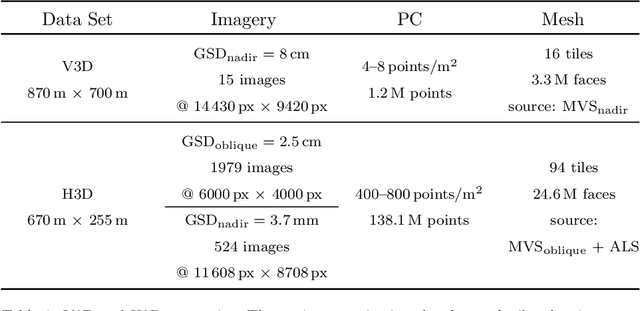
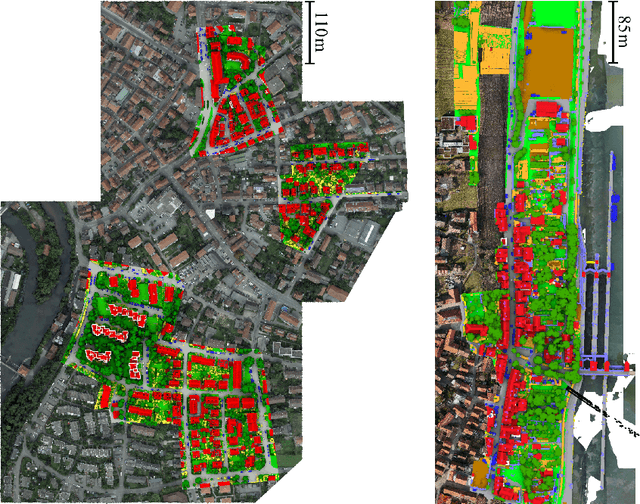
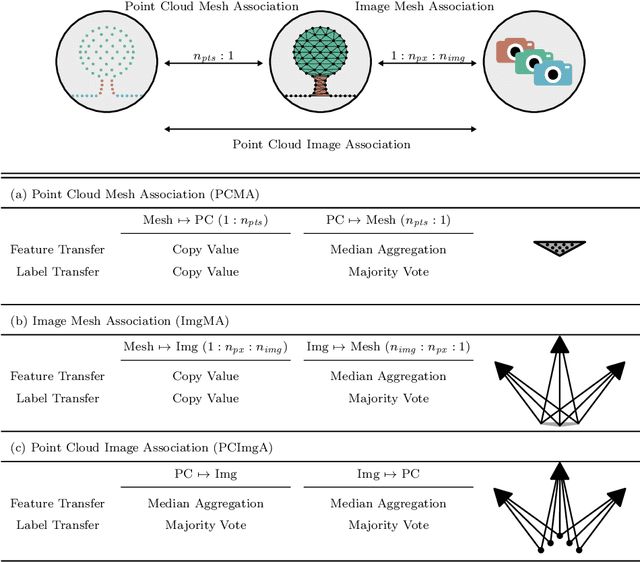
Abstract:The automatic semantic segmentation of the huge amount of acquired remote sensing data has become an important task in the last decade. Images and Point Clouds (PCs) are fundamental data representations, particularly in urban mapping applications. Textured 3D meshes integrate both data representations geometrically by wiring the PC and texturing the surface elements with available imagery. We present a mesh-centered holistic geometry-driven methodology that explicitly integrates entities of imagery, PC and mesh. Due to its integrative character, we choose the mesh as the core representation that also helps to solve the visibility problem for points in imagery. Utilizing the proposed multi-modal fusion as the backbone and considering the established entity relationships, we enable the sharing of information across the modalities imagery, PC and mesh in a two-fold manner: (i) feature transfer and (ii) label transfer. By these means, we achieve to enrich feature vectors to multi-modal feature vectors for each representation. Concurrently, we achieve to label all representations consistently while reducing the manual label effort to a single representation. Consequently, we facilitate to train machine learning algorithms and to semantically segment any of these data representations - both in a multi-modal and single-modal sense. The paper presents the association mechanism and the subsequent information transfer, which we believe are cornerstones for multi-modal scene analysis. Furthermore, we discuss the preconditions and limitations of the presented approach in detail. We demonstrate the effectiveness of our methodology on the ISPRS 3D semantic labeling contest (Vaihingen 3D) and a proprietary data set (Hessigheim 3D).
The Hessigheim 3D (H3D) Benchmark on Semantic Segmentation of High-Resolution 3D Point Clouds and Textured Meshes from UAV LiDAR and Multi-View-Stereo
Feb 25, 2021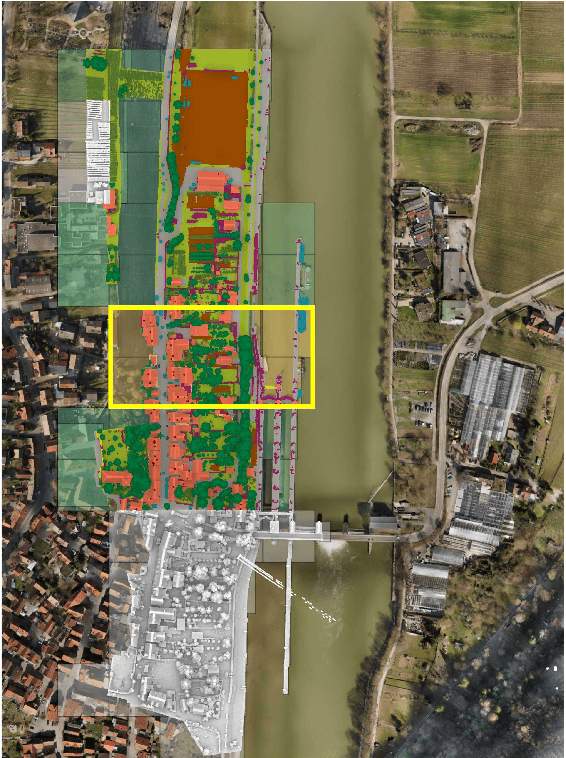

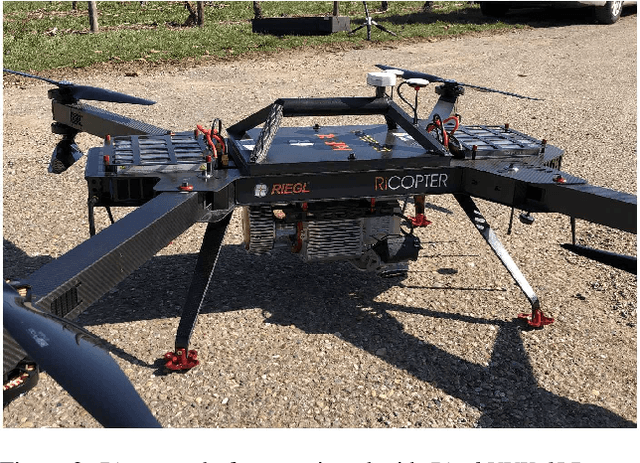
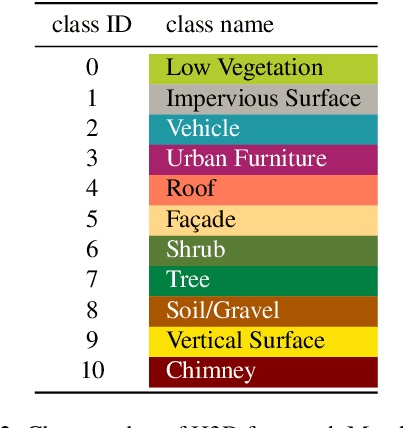
Abstract:Automated semantic segmentation and object detection are of great importance in geospatial data analysis. However, supervised machine learning systems such as convolutional neural networks require large corpora of annotated training data. Especially in the geospatial domain, such datasets are quite scarce. Within this paper, we aim to alleviate this issue by introducing a new annotated 3D dataset that is unique in three ways: i) The dataset consists of both an Unmanned Aerial Vehicle (UAV) laser scanning point cloud and a 3D textured mesh. ii) The point cloud features a mean point density of about 800 pts/sqm and the oblique imagery used for 3D mesh texturing realizes a ground sampling distance of about 2-3 cm. This enables the identification of fine-grained structures and represents the state of the art in UAV-based mapping. iii) Both data modalities will be published for a total of three epochs allowing applications such as change detection. The dataset depicts the village of Hessigheim (Germany), henceforth referred to as H3D. It is designed to promote research in the field of 3D data analysis on one hand and to evaluate and rank existing and emerging approaches for semantic segmentation of both data modalities on the other hand. Ultimately, we hope that H3D will become a widely used benchmark dataset in company with the well-established ISPRS Vaihingen 3D Semantic Labeling Challenge benchmark (V3D). The dataset can be downloaded from https://ifpwww.ifp.uni-stuttgart.de/benchmark/hessigheim/default.aspx.
 Add to Chrome
Add to Chrome Add to Firefox
Add to Firefox Add to Edge
Add to Edge